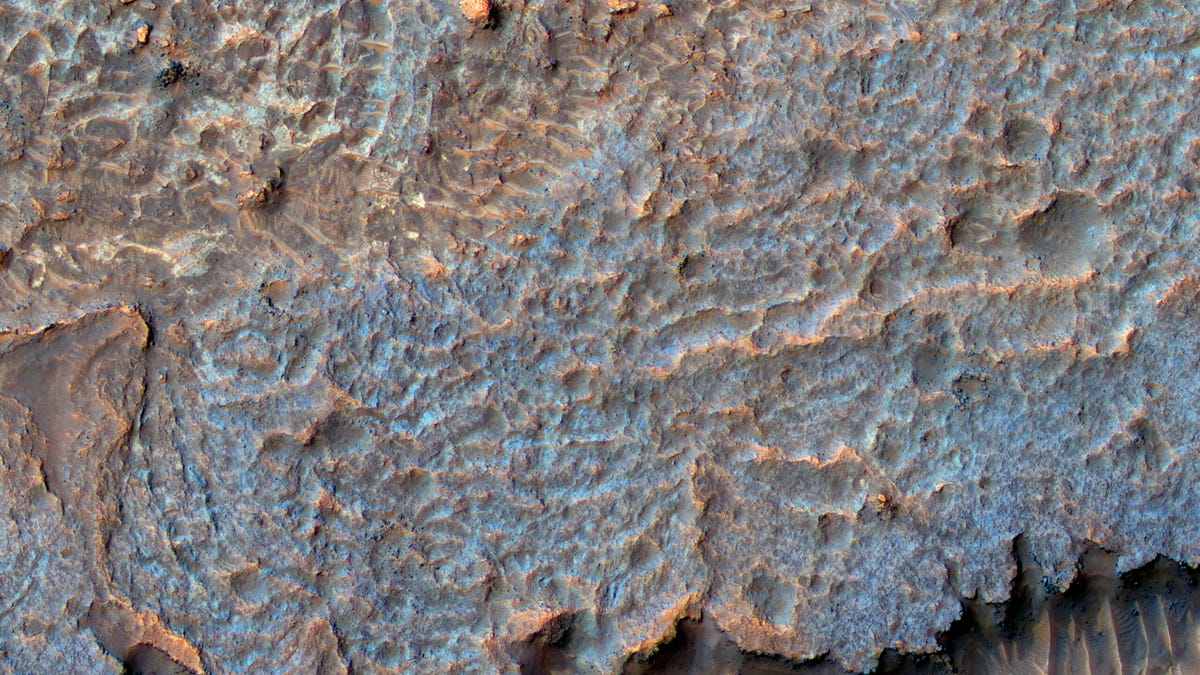NASA puzzles over mysterious Mars ridges billions of years in the making
Scientists have come up with at least one possible explanation, but answers are elusive.
For as much as we know about Mars, a lot of the planet remains mysterious. NASA's Mars Reconnaissance Orbiter (MRO) snapped a picture of "puzzling" ridged terrain located near a wild region called Aureum Chaos.
The MRO's HiRise camera took a closer look at the area. "In this image we can see much detail, but the origin of the surface texture is still intriguing," wrote the University of Arizona HiRise team in a picture-of-the-day feature on Aug. 30.
The HiRise team came up with one possible explanation, which starts with a long-ago layering of sediments left by water or volcanic activity.
"A crudely polygonal patterned ground was created by stresses in the sediments, and groundwater followed the fractures and deposited minerals that cemented the sediments. This was followed by perhaps billions of years of erosion by the wind, leaving the cemented fractures as high-standing ridges," the HiRise group suggested.
But take that idea with a grain of martian sand. "Of course, this story is almost certainly incomplete if not totally wrong," the feature concluded.
Rough landscapes aren't good candidates for rover exploration or human landing sites. This is where helicopters like the one traveling with NASA's recently launched Perseverance rover could one day come in handy.
If successful, the Ingenuity Mars chopper could kick off a new trend in the exploration of other worlds, giving us close-up views of locations other robotic explorers can't visit.
The story of Mars geology is an unfinished book, but we're adding chapters all the time, even if some of them end in question marks.


